
The Vedic/Hindu tradition is steeped in a rich tapestry of festivals that are celebrated throughout the year. These Hindu festivals of India come in a variety of forms, ranging from major events that draw people from all over the world to smaller, more localized celebrations that reflect the unique cultural practices of different regions. Some festivals are so significant that they are recognized as national holidays and celebrated with great fanfare across the country. Meanwhile, others are specific to certain regions or communities and are celebrated in unique ways that reflect the local customs and traditions. These festivals in Hinduism serve a unique purpose, honoring various incarnations of God, marking the changing seasons, celebrating bountiful harvests, recognizing the importance of relationships, and honoring fundamental principles of Vedic culture. The festivities are a riot of colors, music, dance, and religious rituals, with some festivals requiring devotees to undertake fasts as part of their observance. Despite these variations, the underlying thread that runs through all Hindu festivals is the deep reverence and devotion that is central to the religion. Whether celebrated on a grand scale or in a more subdued manner, each festival is an opportunity for Hindus to connect with their faith, honor their heritage, and come together in celebration and community. In this article we are going to discuss a few of the prominent Hindu festivals of India.
#1 Makar Sankranti
Makar Sankranti is a significant festival celebrated in the Hindu tradition. It marks the transition of the sun from Sagittarius to Capricorn during the winter solstice in the Northern Hemisphere and is considered a special and auspicious time. This is when the sun moves from the Dakshinayana (southern) route to the Uttarayana (northern) route. The festival marks the end of winter and the beginning of longer days due to the sun’s journey up north. The Uttarayana route begins on January 14 and lasts until July 14. Taking a holy dip in a confluence of rivers (such as at Triveni) during this period is believed to be very auspicious. It is believed that those who die in this period attain moksha or liberation from the cycle of birth and death.
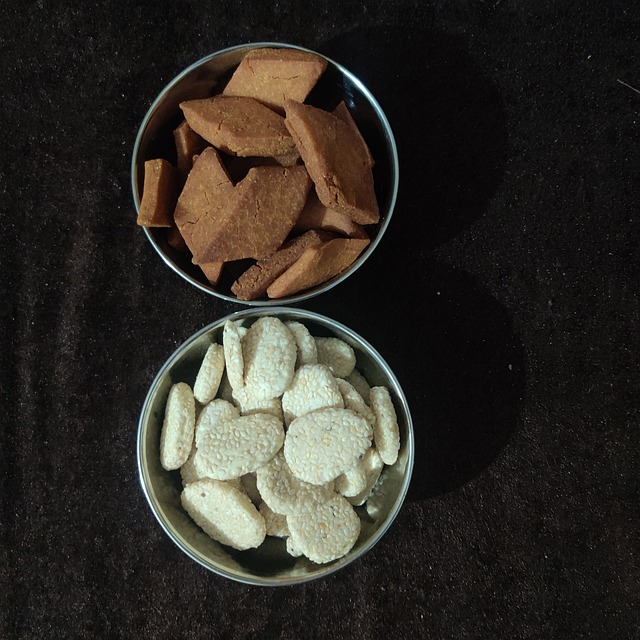
In line with astrological calculations, the Kumbha Mela is conducted once every 12 years at Allahabad, beginning on Makar Sankranti. The festival is also celebrated as a harvest festival, expressing gratitude to nature and spreading goodwill, peace, and prosperity. Makar Sankranti is celebrated on January 14 or January 15 in leap years and is the only Hindu festival based on the solar calendar.
The festival is known by various names across different regions of India and is celebrated in different ways, including lighting bonfires, kite flying, and feasting on traditional sweets made with sesame or jaggery. Makar Sankranti is known by different names in different regions of India. In Uttar Pradesh and Gujarat, it is referred to as Uttarayan or Kicheri, while in Odisha, it is known as Makara Chaula. Bihar observes the festival as Til Sakraat or Dahi Chura, and Keralites celebrate it as Makaravilakku. Similarly, in Karnataka, the festival is called Suggi, while Tamil Nadu celebrates it as Pongal. Maharashtra and Goa observe the festival as Haldi Kumkum or Maghi Sankrant, and Himachal Pradesh calls it Magha Saaji. In Assam, the festival is known as Magh Bihu or Bhogali Bihu, while in West Bengal, it is called Poush Sankranti.
#2 Vasant Panchami
Vasant Panchami is a much-awaited festival in the northern parts of India, celebrated towards the end of the harsh winter season in January-February, when the weather changes to a milder and more pleasant climate, welcoming the onset of spring, or “Vasant”. The blooming of yellow mustard fields further signifies the arrival of spring, which is why Punjabis celebrate the day by donning yellow clothing, feasting, and engaging in the age-old tradition of kite flying.
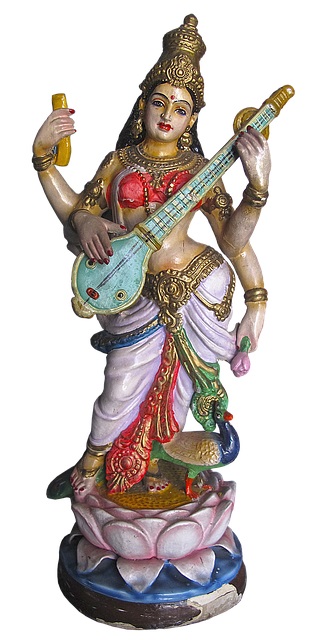
The festivities of Vasant Panchami are not only about celebrating the seasonal transition, but it is also a day to offer prayers to Saraswati, the Hindu goddess of knowledge, music, and art. This day is celebrated with great reverence, especially by students and teachers, who seek her blessings to excel in their respective fields.
This festival has been an integral part of Hindu and Sikh cultures for centuries and is now celebrated all over the Indian subcontinent, including Nepal. In the southern states, it is known as Sri Panchami, while in Bali and Indonesia, it is celebrated as “Hari Raya Saraswati”, meaning the great day of Saraswati.
Overall, Vasant Panchami is a joyous occasion, celebrated with great fervor and enthusiasm, signifying the arrival of spring, the end of winter, and the worship of knowledge, arts, and music.
#3 Maha Shiva ratri
Maha-Shivaratri, or ‘The Great Night of Shiva,’ is a significant festival celebrated by Hindus worldwide during February-March. According to the Hindu calendar, the festival is observed on the fourteenth day of the dark (waning) half of the lunar month of Phalguna or Magha. The festival is considered auspicious for both men and women, but it holds a special significance for women. Married women pray for the well-being of their husbands and sons, while unmarried women pray for a husband like Shiva, who is considered the epitome of an ideal husband.
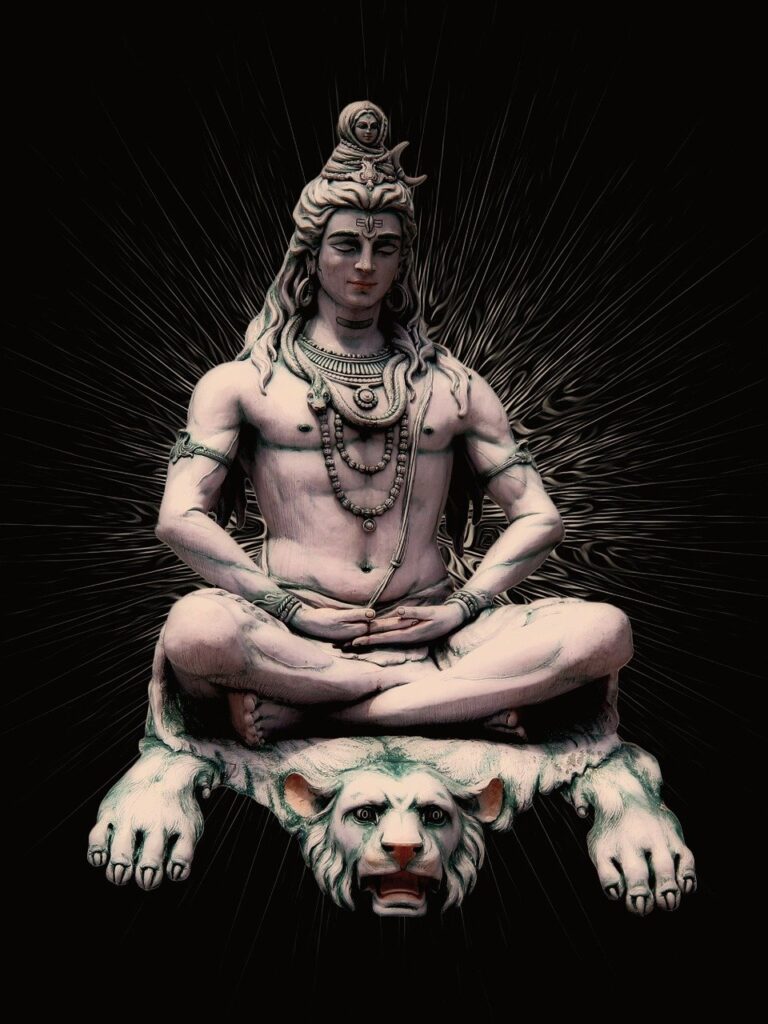
Legend has it that on this day, Parvati, the wife of Shiva, prayed, meditated, and fasted for the well-being of Shiva and hoped to ward off any evils that may fall upon him. Devotees of Lord Shiva follow in her footsteps and engage in various rituals and observances to offer their obeisances to Lord Shiva.
The festival follows a typical pattern of preparation, purification, realization, and then celebration. Devotees awake at sunrise and bathe in holy water, like the Ganges River, and wear new clothes. On this day, people fast and spend the day focused on Lord Shiva, meditating and chanting his names. Through such rituals, the mind is held in single-pointed concentration throughout the day. Then, devotees flock to temples carrying holy water to bathe and worship the Shiva Lingam, a symbolic representation of Lord Shiva. This bathing of the Shiva Lingam represents the cleansing of one’s soul, and the Shiva Lingam is then decorated with flowers and garlands.
It is customary to spend the entire night awake singing the praises of Lord Shiva. At the stroke of midnight, Shiva is said to manifest as the inner light of purified consciousness, representing our overcoming of dark ignorance and reaching a state of purified spiritual knowledge. By staying awake all night, devotees conquer the influence of the mind and senses and enter a state of steady awareness, leading to spiritual awakening.
If one can follow this process, then they can experience the true essence of Shivaratri. Thus, the festival symbolizes the triumph of good over evil, the purification of the soul, and the attainment of spiritual enlightenment.
#4 Holi
Holi is a grandiose festival that commemorates the arrival of spring, the bountiful harvest, and the fecundity of the land. It takes place on the day following the full moon in early March, and it is renowned for the joyous practice of smearing brightly colored powder and water on each other to celebrate the onset of spring. After the jubilant revelry, people bathe and cleanse themselves before distributing sweets among their loved ones. Additionally, Holi features vibrant processions accompanied by folk songs and dances that are intrinsic to its celebrations. The festival is especially popular among the youth.
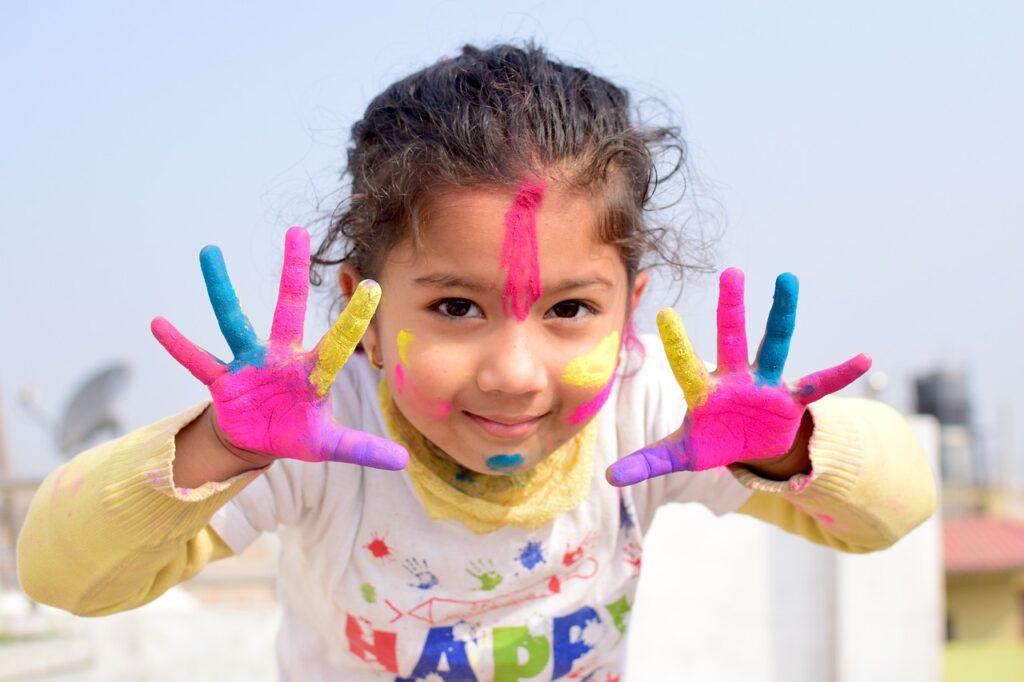
One aspect of Holi that distinguishes it from other festivals is the observance of Holika Dahan, which marks the burning to death of Holika, the aunt of Prahlada. On the eve of Holi, huge bonfires are lit to commemorate this event. Holika Dahan, or Choti Holi, as it is also known, is observed a day prior to the actual day of Holi. It is on this day that all religious rituals associated with the Holi Parva, including the burning of the effigy of the demoness Holika, are performed.
Lathmar Holi, on the other hand, is a unique Holi festival celebrated in the twin towns of Nandgaon and Barsana, located in the northern state of Uttar Pradesh, India. This festival commemorates an ancient pastime where Lord Krishna and His cowherd friends wished to spray colors on Radha and her friends. However, upon entering Barsana, they were met with sticks (also known as lathi) from the women of Barsana, and were driven out of the town. As per tradition, every year on the occasion of Holi, the men of Nandgaon, who are treated as the sons-in-law of Barsana, visit the town and are greeted with colors and sticks by the women of Barsana. The men try to protect themselves from the beatings by holding small shields above their heads, while the women chase them with sticks. This celebration is conducted in a spirit of good humor and joy by both the men of Nandgaon and the women of Barsana.
#5 Gaura Purnima
Gaura Purnima is a joyous occasion commemorating the birth of Sri Chaitanya Mahaprabhu, a spiritual leader who is widely recognized as the incarnation of Lord Krishna. This auspicious event is celebrated on the Purnima, or full moon day, in the Hindu month of Phalguna, typically falling in the months of March or April. The name “Gaura Purnima” is derived from the fact that Sri Chaitanya Mahaprabhu was known as the “Golden Avatar,” a reference to his divine radiance and purity of heart.
During this festive occasion, devotees of Sri Chaitanya Mahaprabhu fast and gather together to chant Harinama Sankirtana, a form of congregational chanting that he popularized during his lifetime. As the moon rises in the sky, a sumptuous feast is shared by all, symbolizing the importance of unity and sharing in the teachings of Sri Chaitanya Mahaprabhu.
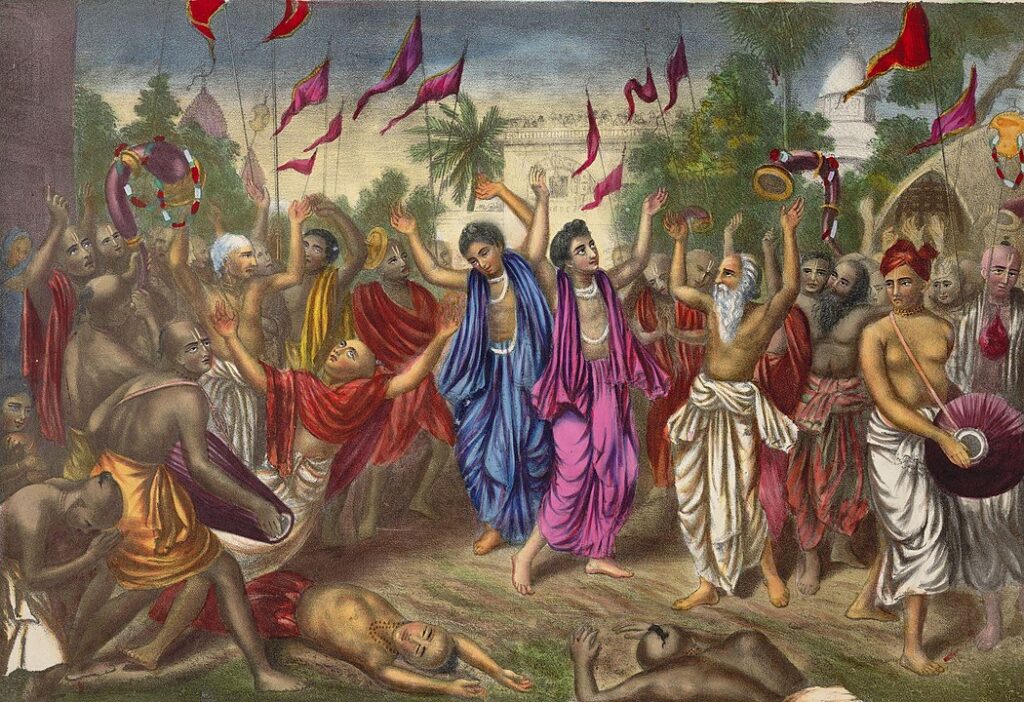
Sri Chaitanya Mahaprabhu’s teachings have inspired countless men and women around the world to come together in a common cause, to forget their external differences and support one another in their spiritual journey. The practice of congregational chanting of ‘Hare Krishna’ has spread far and wide, from the streets of London and Paris to Tokyo and New Delhi, as a result of his influence. Many eminent personalities have hailed Sri Chaitanya Mahaprabhu’s life and teachings as unparalleled in human history.
#6 Rama Navami
Rama Navami is a joyous Hindu festival celebrated annually in March or April to commemorate the birth of Lord Rama, an avatar of the revered deity Lord Vishnu. This festival holds immense significance among the devotees of Lord Rama who observe a day-long fast and engage in elaborate rituals to worship Him.
Lord Rama, the protagonist of the epic Ramayana, was known for His extraordinary qualities such as bravery, kindness, justice, intelligence, patience, love, obedience, and duty. As the king of Ayodhya, Lord Rama embodied the ideal qualities of a just ruler and continues to be revered by His devotees for His inspiring life and teachings.

During Rama Navami, devotees offer special prayers to Lord Rama along with His consort Sita, brother Lakshmana, and devotee Hanuman. They also worship the Sun God, as Lord Rama was believed to have descended from the Solar dynasty.
Apart from the traditional worship rituals, Rama Navami celebrations include reading the epic Ramayana and staging plays that depict the life and pastimes of Lord Rama, known as the Rama Lila. The festival brings people together in a spirit of devotion and celebration, and serves as a reminder of the virtues and values that Lord Rama exemplified in His life.
#7 Ugadi and Vishu
In South India, there are two significant festivals that commemorate the New Year – Ugadi and Vishu. Ugadi, also known as Yugadi, is observed in March or April, specifically on “Chaitra Suddha Padyami,” the first day of the bright half of the Indian month of Chaitra. This festival holds immense historical and cultural importance in Hindu traditions, and is marked by donations to temples and community centers. Ugadi is not only celebrated in South India but is also observed as a New Year in various parts of India, such as Gudi Padwa in Maharashtra, and even recognized as a national public holiday in Mauritius.
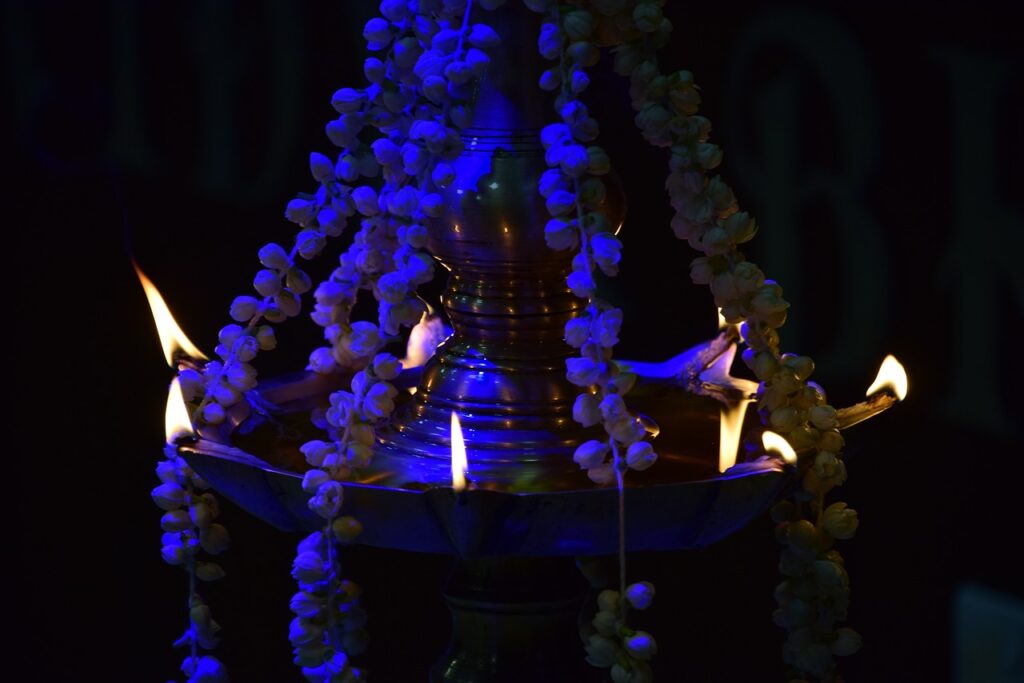
On the other hand, Vishu, celebrated in mid-April, is observed as the first day of Medam, the first month of the Malayalam Calendar in Kerala. It is celebrated with great enthusiasm by families, who wake up early in the morning to witness good things such as a picture of God, grains, flowers, fruit, and gold. It is believed that viewing these items first thing in the morning brings prosperity and wealth throughout the year. This festival, therefore, signifies the start of a new beginning, and people celebrate it with high spirits.
In summary, Ugadi and Vishu are two prominent festivals that mark the New Year in South India. Both festivals hold immense cultural and religious significance in their respective communities and are celebrated with great zeal and enthusiasm.
#8 Hanuman Jayanti
Hanuman Jayanti is an auspicious celebration that commemorates the birth of Sri Hanuman, an unwavering devotee and eternal servitor of Lord Sri Ramachandra.
India is home to hundreds and thousands of temples dedicated to Hanuman, with at least one shrine dedicated to him in every Vaishnava temple. Devotees worship and pray to Hanuman to overcome obstacles on their path of devotion.
Hanuman Jayanti is celebrated on different days in various parts of the country. In Maharashtra, it is observed on Chaitra Purnima, while in Tamilnadu and Kerala, it is celebrated in the month of Margazhi (December – January). In Karnataka and Andhra Pradesh, it is celebrated on Vaishaka Krishna Dashami, the 10th day of the waning moon in the month of Vaisakha. In Odisha, it is celebrated on the first day of Vaishaka month. In our temple, Hanuman Jayanti is celebrated according to local traditions on Vaishaka (April-May) Krishna Paksha Dashami.
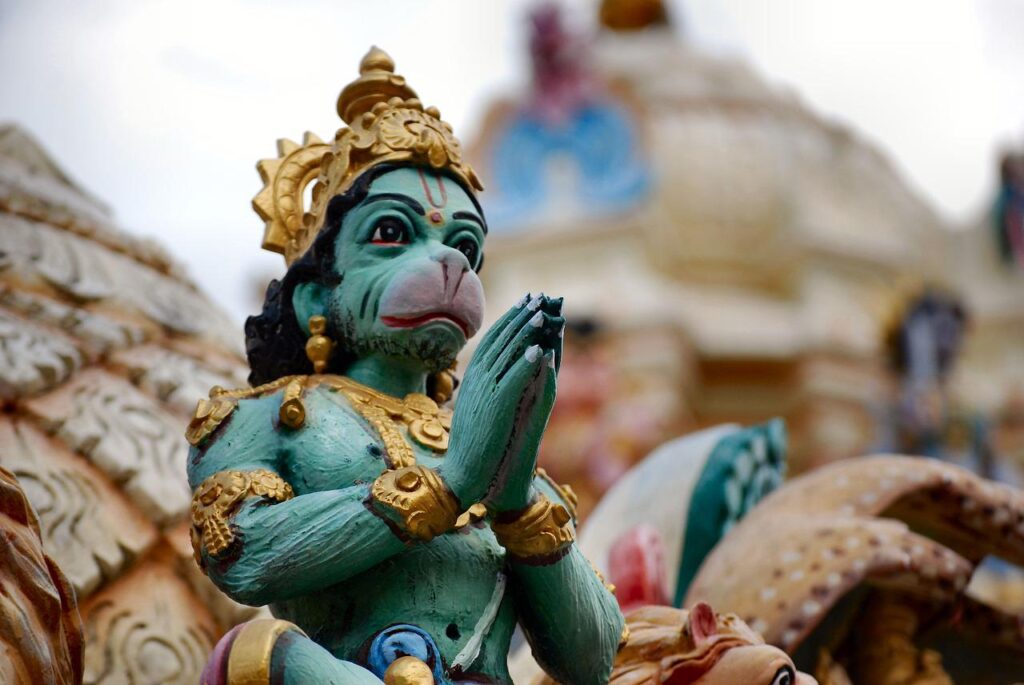
Hanuman, the Avatara of Lord Siva, was born to the Wind-God and Anjani Devi. He is also known as Pavanasuta, Marutsuta, Mahavira, Bajrangabali, and Pavankumar.
Hanuman personified the power of Ram-Nam and exemplified an ideal selfless worker, a true devotee, and an exceptional celibate. He served Sri Rama with pure love and devotion, living only to serve him. Humble, brave, and wise, he possessed all divine virtues and accomplished feats that others could not, such as crossing the ocean with the power of Ram-Nam, burning the demon-king’s city of Lanka, and bringing the sanjeevani herb to restore Lakshmana’s life. He also rescued Sri Rama and Lakshmana from the netherworld after killing Ahiravana.
Hanuman embodied devotion, knowledge, selfless service, celibacy, and desirelessness. He never boasted of his bravery and intelligence, humbly stating to Ravana, “I am a messenger of Sri Rama. I am here to serve Sri Rama, to do His work. By His command, I have come here. I am fearless by His Grace. I am not afraid of death; I welcome it if it comes while serving Sri Rama.”
#9 Guru Purnima
Guru Purnima is a sacred festival that holds great spiritual significance. This auspicious day is dedicated to showing respect and reverence to one’s guru or teacher who has played a significant role in guiding and shaping one’s life. This festival, also known as Vyasa Purnima, is celebrated on the full moon day in July-August. According to legend, this day marks the birth anniversary of Vyasadeva, the great sage who compiled the four Vedas and is considered a symbol of wisdom and knowledge. Hindus, Jains, and Buddhists in India, Nepal, and Bhutan celebrate this festival with great zeal and enthusiasm.
The word ‘guru’ is derived from the Sanskrit root words ‘gu’ and ‘ru’, where ‘gu’ means darkness or ignorance, and ‘ru’ means dispeller. Therefore, a guru is someone who removes the darkness of ignorance and leads one towards the light of knowledge. Guru Purnima is an opportunity for disciples to express their gratitude towards their spiritual leaders or gurus, who have guided them through life’s challenges and helped them realize their true potential.
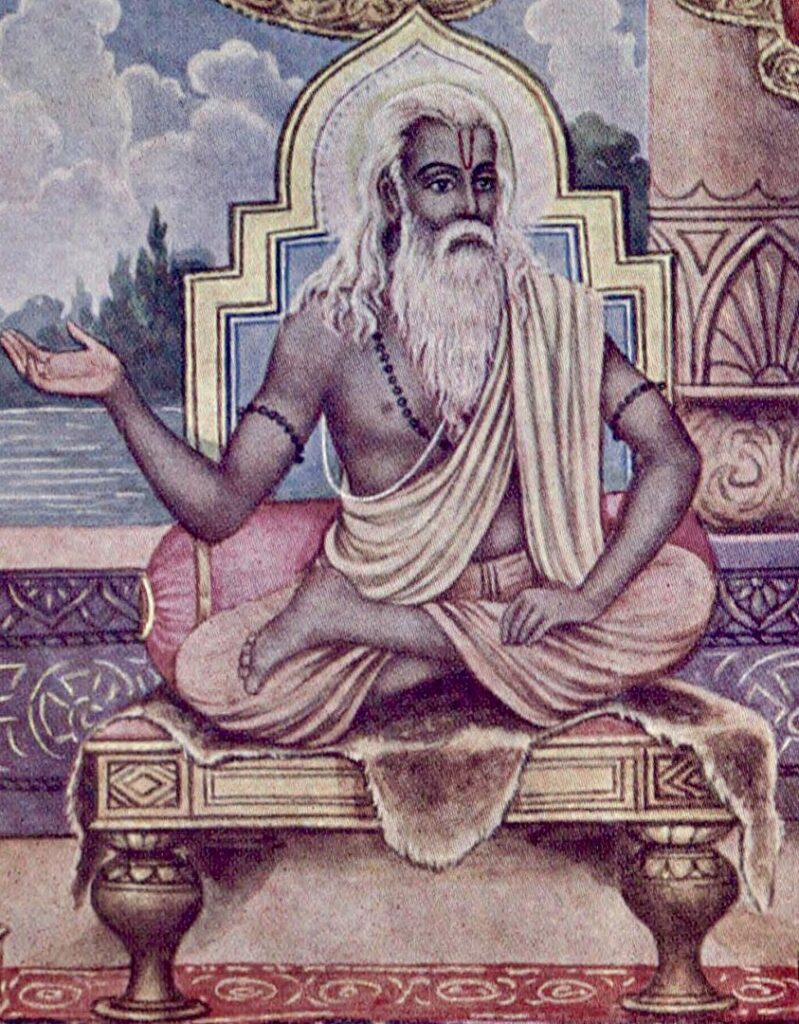
On this day, disciples gather to celebrate their gurus’ invaluable teachings and seek their blessings for a brighter future. The festival is marked by various spiritual activities and may include a special ritual called Guru Puja, which is performed to honor the guru or teacher. This ritual involves offering prayers, flowers, and other offerings to the guru’s feet, expressing gratitude for their guidance and blessings.
In conclusion, Guru Purnima is not just a festival, but a sacred occasion to pay homage to the guru’s immense wisdom and knowledge. It serves as a reminder to disciples to remain grateful for their teachers’ selfless guidance and to continue to strive towards enlightenment and self-improvement.
#10 Onam
The Onam festival, predominantly celebrated in Kerala during August-September, commemorates the day when Emperor Maha Bali, a devout follower of Lord Vishnu and grandson of Prahlada, was granted blessings and liberation by the Lord’s Vamanadeva incarnation in the form of a dwarf. The festival spans ten days and features women adorning their homes with intricate floral designs, conducting pujas for Lord Vishnu, engaging in feasting and participating in boat races.
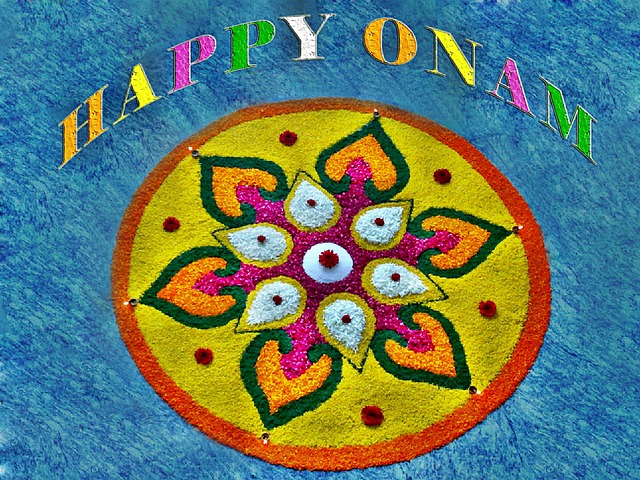
Lord Vishnu appeared as Lord Vamana Deva, the dwarf incarnation, initially holding weapons but then transformed into a dwarf in front of his parents. During Bali Maharaja’s Ashwamedha yajna, Vamana Deva approached him and begged for three steps of land as alms. Bali Maharaja welcomed him with great joy and offered him a seat. Despite the warning of his spiritual master, Sukracharya, Bali Maharaja refused to break his promise and granted the request of Lord Vamana Deva. The Lord tricked Bali Maharaja and deprived him of all his material possessions by asking for only three steps of land. Bali Maharaja eventually offered his own body to fulfill the measurement of the Lord’s third step. Impressed by Bali Maharaja’s devotion, Lord Vamana Deva served as his doorkeeper.
#11 Raksha Bandhan
This festival honors the bond between siblings. On this occasion, sisters tie a rakhi, a beautiful bracelet made of silk thread, around their brothers’ wrists to ward off any negative energies. It is typically observed in July-August.
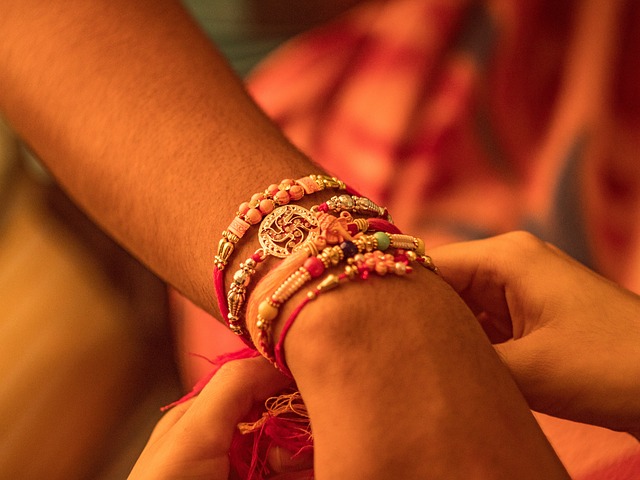
Raksha Bandhan features the worship of various deities depending on the region. In Maharashtra, the festival is known as Narali Purnima and fishermen honor God Varuna, the ruler of the sea, by offering coconuts in the water. In West Bengal, the occasion is called Jhulan Purnima, and devotees worship Lord Krishna and Radha. Odisha state observes Raksha Bandhan as Gamha Purnima, during which buffaloes and cows are revered. Meanwhile, in northern states like Madhya Pradesh, Chhattisgarh, and Uttar Pradesh, the festival is celebrated as Kajari Purnima, and Goddess Bhagvati is worshiped for her blessings. In Gujarat, Pavitropana is celebrated on Raksha Bandhan, with devotees offering their prayers to Lord Shiva.
#12 Krishna Janmashtami
According to legend, the wicked king Kamsa ruled the city of Mathura, and his sister Devaki was married to Vasudeva. Kamsa was warned that his sister’s eighth son would be his downfall, so he imprisoned the couple and killed their first seven sons. Devaki and Vasudeva prayed to God for protection, and Lord Krishna was born as their eighth child to save them. Janmashtami, the day of his birth, is celebrated with bathing, new clothes, temple visits for prayers, singing, and reading of the Bhagavad Gita. Festival meals are prepared and shared, and good wishes are exchanged with friends and family. The festival takes place on the eighth day of the dark fortnight in August-September, with decorated temples and homes featuring cribs and other depictions of Lord Krishna’s childhood. The celebration includes singing of devotional songs until midnight, the auspicious moment of Lord Krishna’s birth. Krishna Janmastami follows the typical pattern of preparation, purification, realization, and celebration.
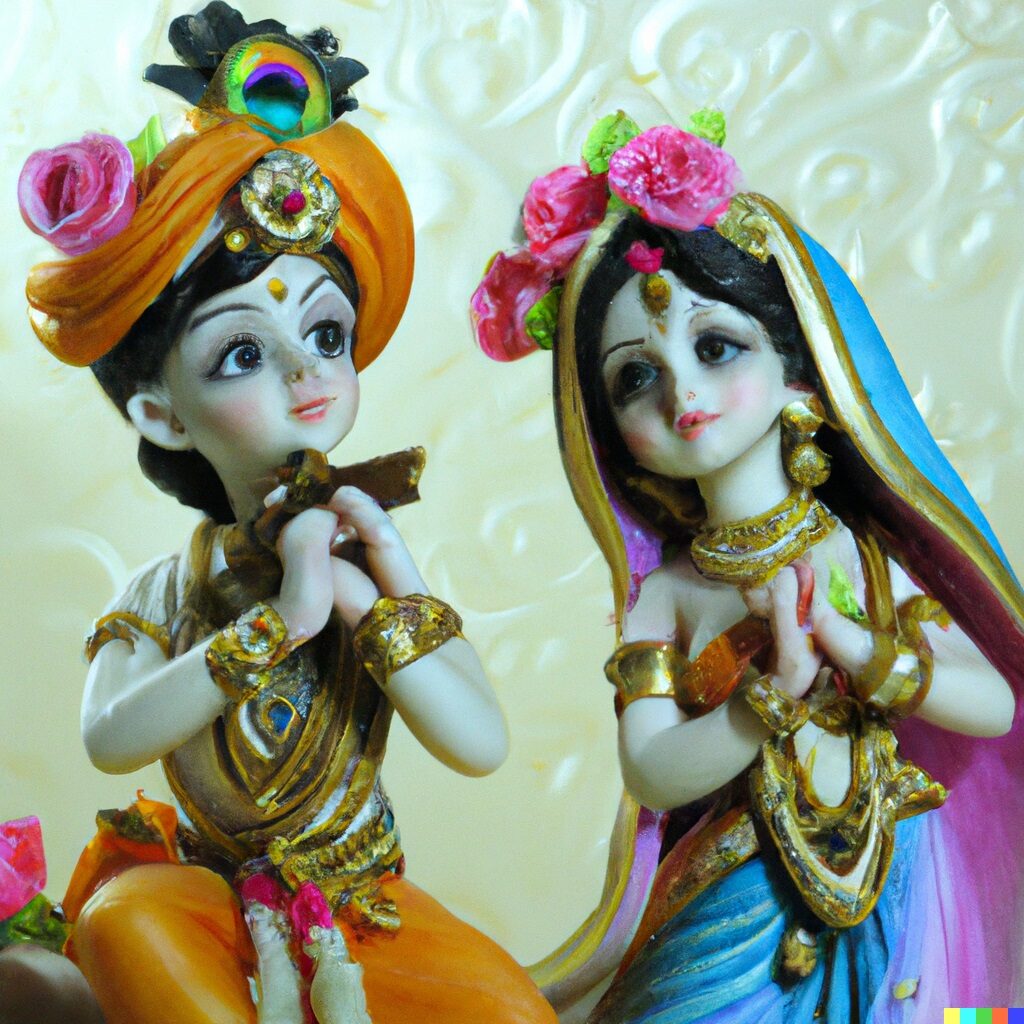
#13 Ganesh Chaturthi
Ganesh Chaturthi is a significant festival in India that honors Lord Ganesh, also known as Vinayaka or the god of wisdom, prosperity, and good fortune. The festival is celebrated on the fourth day of the lunar month, typically falling in August-September. The occasion is especially popular in the state of Maharashtra, where it is celebrated with great fervor by the Marathi community worldwide.
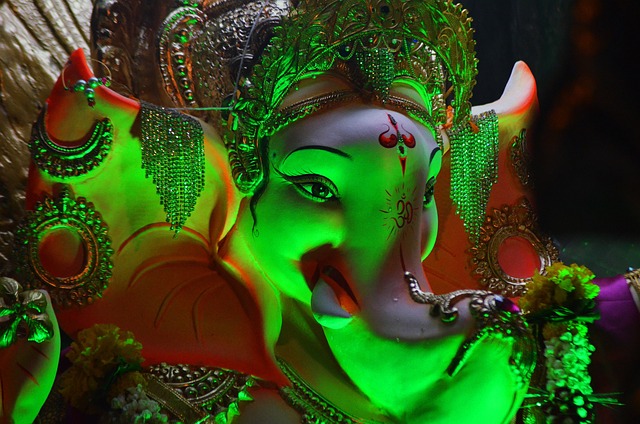
During the festival, people make clay figures of Lord Ganesh in his child form, the elephant-headed god, and worship them for two to ten days, or even longer in exceptional cases. The celebrations involve various rituals, including pooja, aarti, and the distribution of prasad, which is a sweet offering made to the deity. Modak, a traditional and favorite food of Lord Ganesh, is also an essential part of the festivities.
The legend of Lord Ganesh’s birth is significant. One popular story tells of how Parvati created Ganesha out of dirt to guard her while she bathed. When Lord Shiva returned home and tried to enter where she was bathing, Ganesha, not recognizing him, blocked his way, leading to a confrontation that ended with Shiva beheading Ganesha. In response, Parvati was enraged, and Shiva promised to bring Ganesha back to life. After searching for a child’s head facing north, the devas could only find an elephant’s head, which Shiva then fixed onto Ganesha’s body, bringing him back to life.
Overall, Ganesh Chaturthi is a joyous occasion that celebrates Lord Ganesh, his birth, and his significance as the remover of obstacles and the god of good fortune. The festival is an essential part of Indian culture and is celebrated with great enthusiasm, bringing together families and communities to honor the beloved deity.
#14 Diwali
Deepavali, also known as Diwali, is an occasion marked by the celebration of lights, observed on the New Moon day of the dark fortnight between October and November. It is a festival that symbolizes the triumph of good over evil and is linked with various narratives and beliefs, including the homecoming of Lord Rama, the subjugation of the demon King Narakasura by Lord Krishna, and the downfall of the demon King Bali.
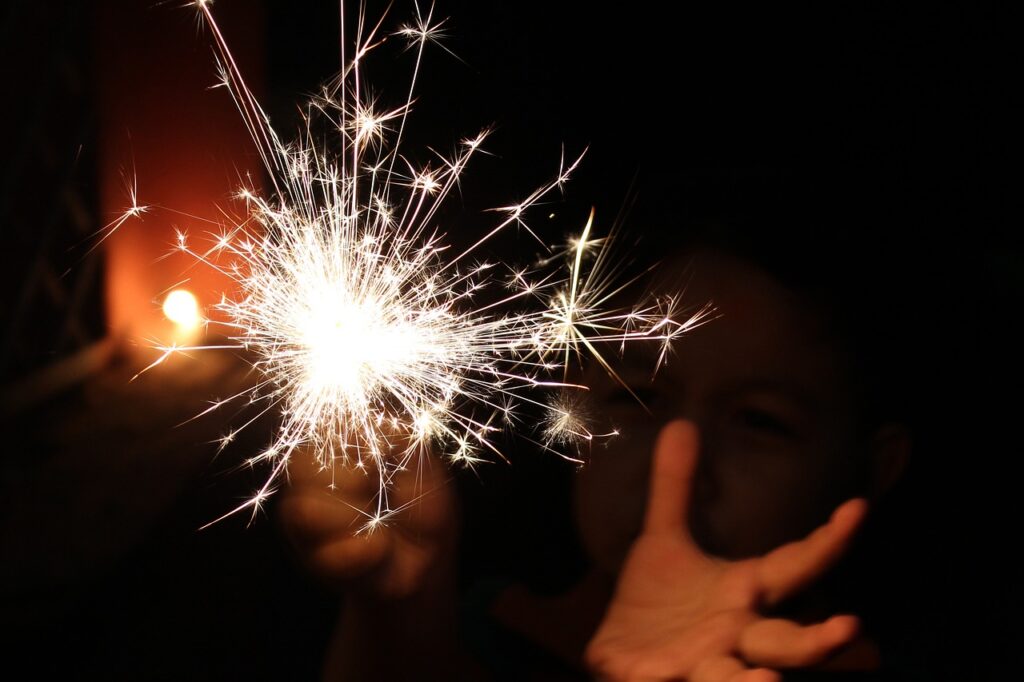
Moreover, it is a festivity that recognizes the radiance within oneself, which dispels ignorance, darkness, and obstacles, and brings contentment, harmony, and an awareness of the interconnectedness of everything. During Diwali, people adorn their homes and hearts, don new clothing, distribute sweets, and illuminate rows of clay lamps called diyas. The celebration is also connected with fireworks and delectable traditional feasts in the evenings. It is a nationwide festival in India, enjoyed by the majority of Indians regardless of their religious affiliation.
#15 Navaratri
Navaratri is a Hindu festival that lasts for nine days and is celebrated during the months of October and November. The festival is dedicated to the Mother Goddess and includes the Sarasvati Puja and Durga Puja festivals. The word “Navaratri” literally means “nine nights,” during which the goddess is worshipped in her different forms of Durga, Lakshmi, and Sarasvati.
The first three nights are dedicated to Durga, who is worshiped for her destructive aspect. She destroys the unwanted barriers that hold us back from our true spiritual potential, such as desire, lust, passion, greed, and anger. Removing these obstacles is necessary for spiritual unfoldment.
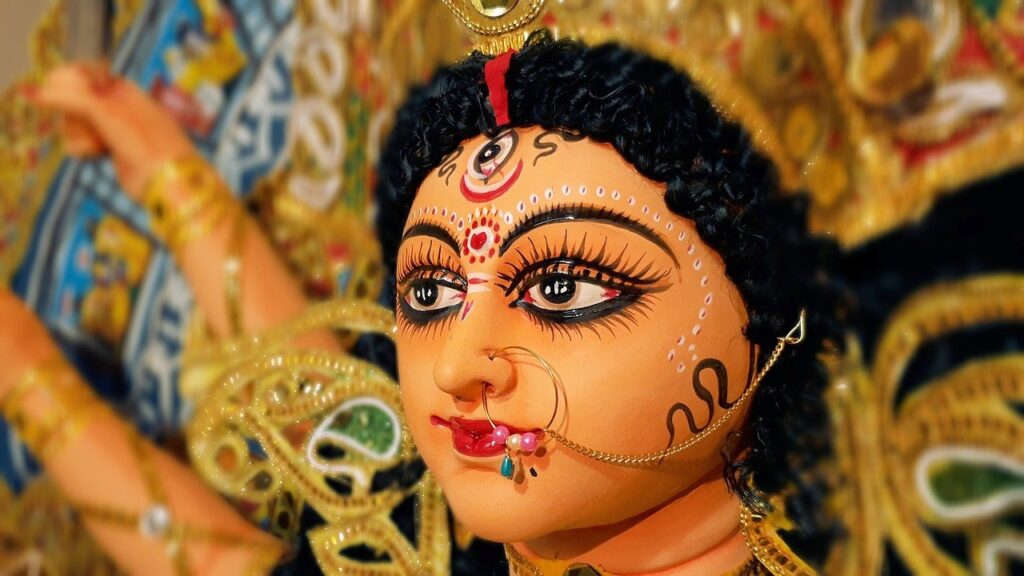
The next three nights are dedicated to Lakshmi, who gives one the wealth of good qualities such as love, compassion, forgiveness, cooperation, nonviolence, devotion, and purity. These positive uplifting qualities replace the bad ones that were removed by Durga.
The last three nights are dedicated to Sarasvati, the goddess of knowledge, who gives one the intelligence, knowledge, and wisdom by which spiritual realization is possible. She represents the highest knowledge of the Self, which helps us tune our minds and intellects for working in harmony with the world and the purpose of our existence.
After having removed our impurities, gained the proper virtues, and acquired the knowledge of the Self, the last day is called Vijayadasami, or the day of victory over our minds and the lower dimension after having worshiped the goddess in her three forms. The celebrations of Navaratri are held at night because it represents our overcoming the ignorance of the mode of darkness, the night of tamo guna (mode of darkness). The festival also commemorates the day on which the combined powers of the three goddesses of Durga or Maha-Kali, Maha Lakshmi, and Maha Sarasvati put an end to the evil forces represented by the buffalo-headed demon Mahishasura.
The Vedic festivals are performed in phases of first preparation, then purification, realization, and then celebration. This represents one’s progress toward the real goal of life. Living life on the basis of spiritual realization means that life is a constant joy and celebration.
#16 Karva Chauth
Karva Chauth is a significant fast for married Hindu women, observed before the festival of Deepavali in October or November. This traditional fast is a way for women to pray for the well-being, prosperity, and longevity of their husbands, who are seen as their protectors after they leave their parents’ homes. The fast is challenging, beginning before sunrise and ending only after worshiping the moon, which often rises late in the evening. Despite its difficulty, Karva Chauth is widely observed in North India, particularly in the states of Rajasthan, Uttar Pradesh, Punjab, Haryana, Madhya Pradesh, and Himachal Pradesh. It is also an important day for Punjabi families in Delhi and the NCR region, who follow the tradition with great devotion. The fast is a testament to the deep love and devotion that married Hindu women hold for their husbands, and the importance of the institution of marriage in Hindu culture.
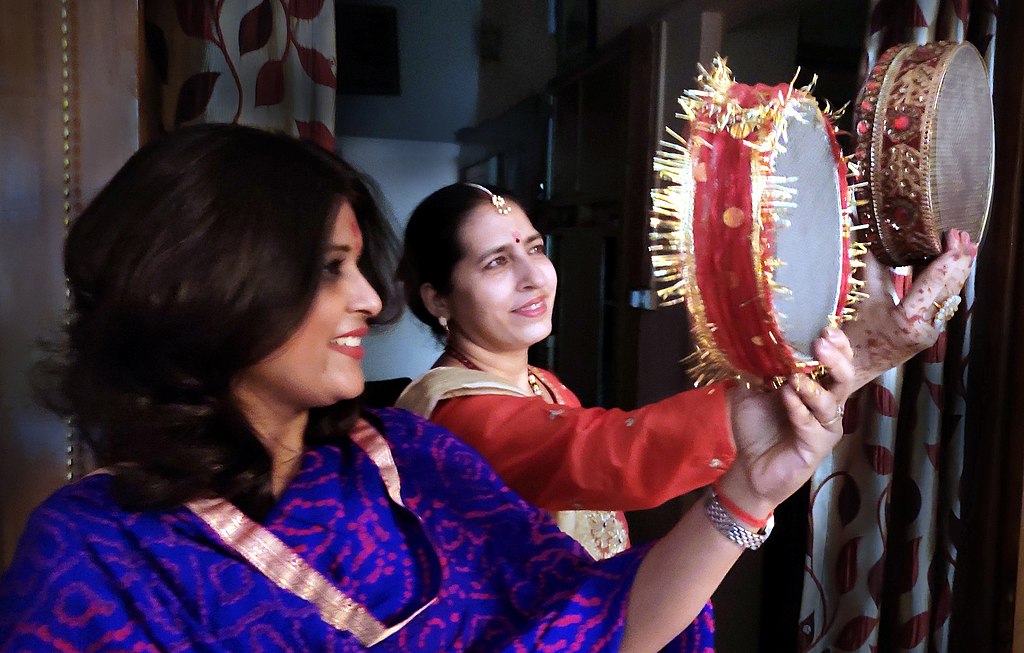
#17 Dussehra
Dussehra and Vijayadashami are two interchangeable terms for the same festival that is celebrated in India. This festival falls on the tenth day of Devi Paksha, which is Shukla Paksha Dashami during the Hindu lunar calendar month of Ashwin. Dussehra usually follows the nine-day Navratri and three-day Durga Puja festivities, which make it one of the most important events in the Hindu calendar. This festival commemorates Lord Rama’s victory over the demon Ravana, and the day is marked with special celebrations and the burning of an effigy of Ravana. The bonfire symbolizes the destruction of the false ego, which represents the purification of one’s being from the ten sins committed by the ten active senses. This process leads one towards the transcendental experience, where they can reach the perception of God.

Dussehra is a festival that demonstrates the Vedic process’s various aspects, which are all vehicles to transcend the mind, senses, and the temporary material world. By purifying themselves from the dictates of the mind and the temporary world of sense objects, individuals can enter into the Supreme Reality and reestablish their lost relationship with the Supreme Being. This festival is celebrated throughout India and is a significant cultural event for Hindus.
#18 Jagannath Rath yatra
Jagannath Rath Yatra is a magnificent festival that takes place in June or July, also known as the Car Festival or Gundicha Yatra. During this festival, the three idols of Lord Jagannath, Balabhadra, and Subhadra are carried in large chariots from the main street of Jagannath Puri to the Gundicha Temple. This festival holds immense significance as it is celebrated in commemoration of Lord Krishna’s visit to Kurukshetra with his elder brother, Balarama, and younger sister, Subhadra, during a solar eclipse. This place is still considered as a place of pilgrimage where people gather especially during solar and lunar eclipses.
Krishna was raised as a foster son of Nanda Maharaja and Yashoda in Vrindavana during His childhood. However, He left Vrindavana, causing the people there to become very unhappy. When Krishna came to Kurukshetra, the people of Vrindavana got the news and came to see Him. Srimati Radharani, the most beloved personality, requested Krishna to come back to the village and pulled His Rath (chariot) to take Him to Vrindavana. The feeling of ecstatic joy during this event is beyond words.
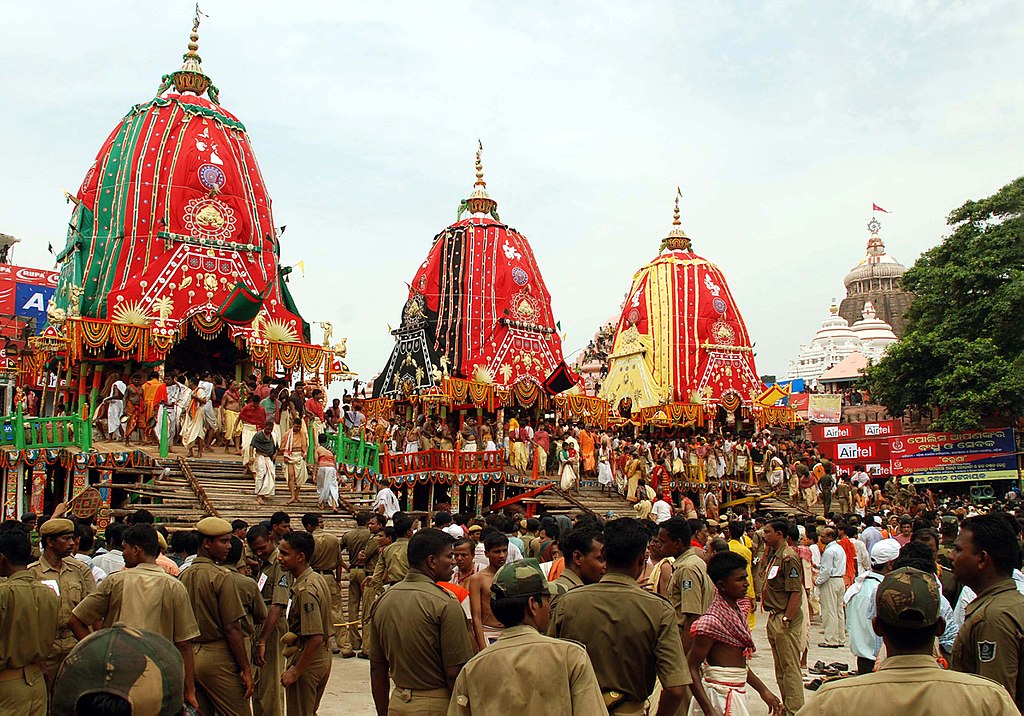
Lord Chaitanya Mahaprabhu took sannyasa at the age of twenty-four, and upon his mother’s request, he lived at Jagannatha Puri. Every year, he took part in the car festival of Jagannatha with the same mood of separation as Srimati Radharani. This Ratha Yatra festival is not only a celebration of the past but a festival of feelings that connects the devotees to Krishna. It is a beautiful and joyous occasion that helps anyone participating in it to develop their dormant love for Krishna. The festival is not limited to Orissa but is celebrated all over the world by devotees of Lord Jagannath with wholehearted participation.
#19 Akshay tritiya
Akshaya Tritiya is considered to be one of the most propitious days for embarking on new journeys. This festival is celebrated on the third day (Tritiya) of the bright fortnight (Shukla Paksha) in the month of Vaishakha each year.
The term ‘Akshaya’ in Sanskrit means infinite or inexhaustible, implying that this festival is a celebration of unceasing joy, serenity and prosperity.
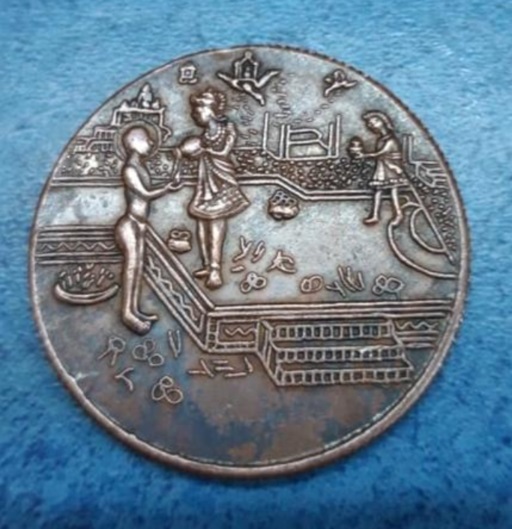
Akshaya Tritiya carries immense significance, for it marks several significant events in Hindu History, such as Lord Parashurama’s appearance, the River Ganges’ descent to Earth, the beginning of Treta yuga, Sudama’s visit to Lord Krishna at Dwaraka, the Pandavas’ acquisition of the Akshaya Patra from the Sun God, the commencement of Vyasadeva’s composition of the Mahabharata, Adi Shankaracharya’s composition of the Kanakadhara Stotram, Kubera’s receipt of his wealth and position as the custodian of wealth, and the manifestation of Goddess Annapoorna Devi.
#20 Gita Jayanti
This is a commemoration of the day when Lord Krishna imparted the timeless wisdom of the Bhagavad-Gita to his comrade Arjuna on the battlefield of Kurukshetra, located to the north of New Delhi. Typically, this festivity occurs in the initial weeks of December and is regarded as the Bhagavad gita’s manifestation day.
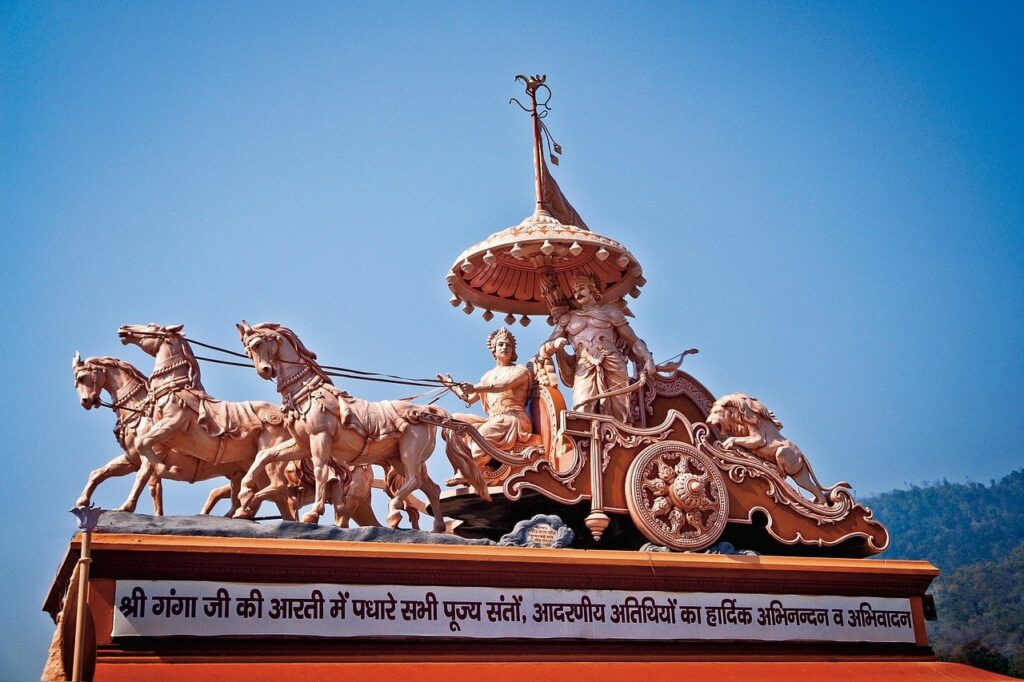
Image Credits:
CSG-Info, CC BY-SA 4.0 via Wikimedia Commons
Krupasindhu Muduli, CC BY-SA 3.0 via Wikimedia Commons
Fgndgndgnr, CC BY-SA 4.0 via Wikimedia Commons